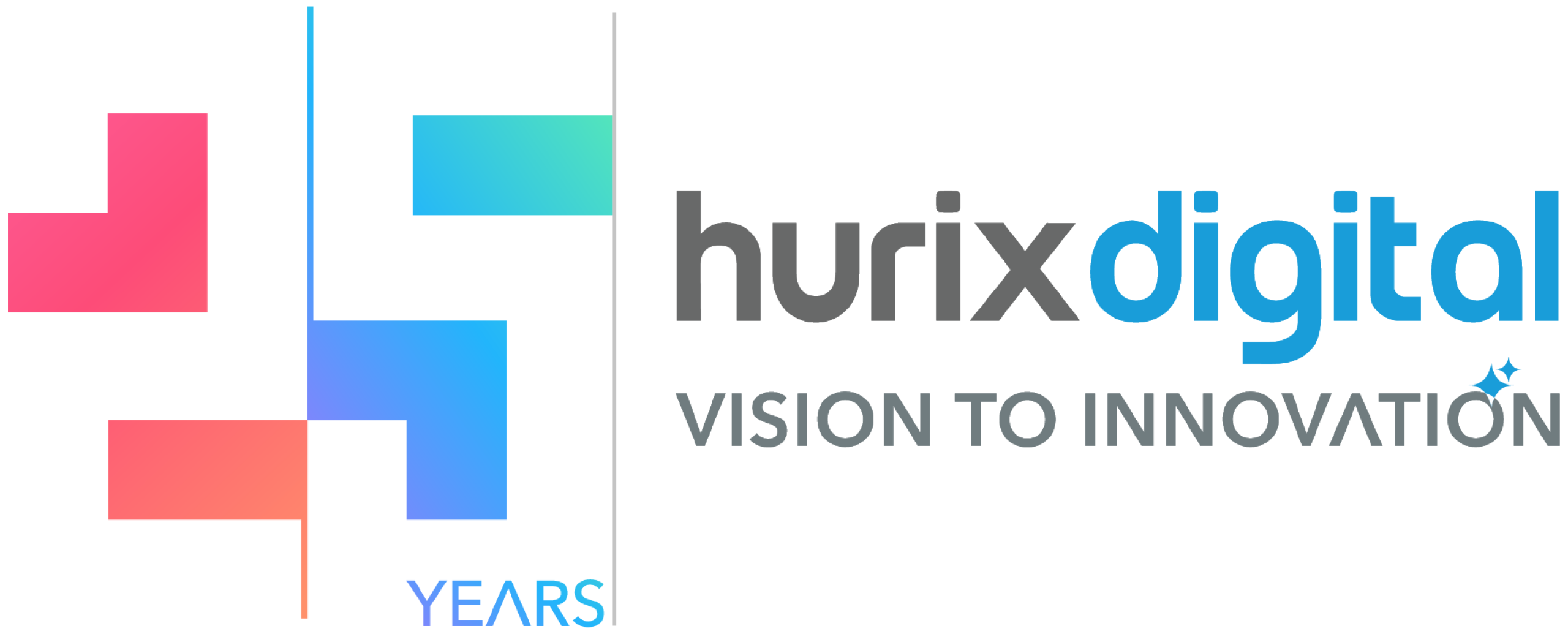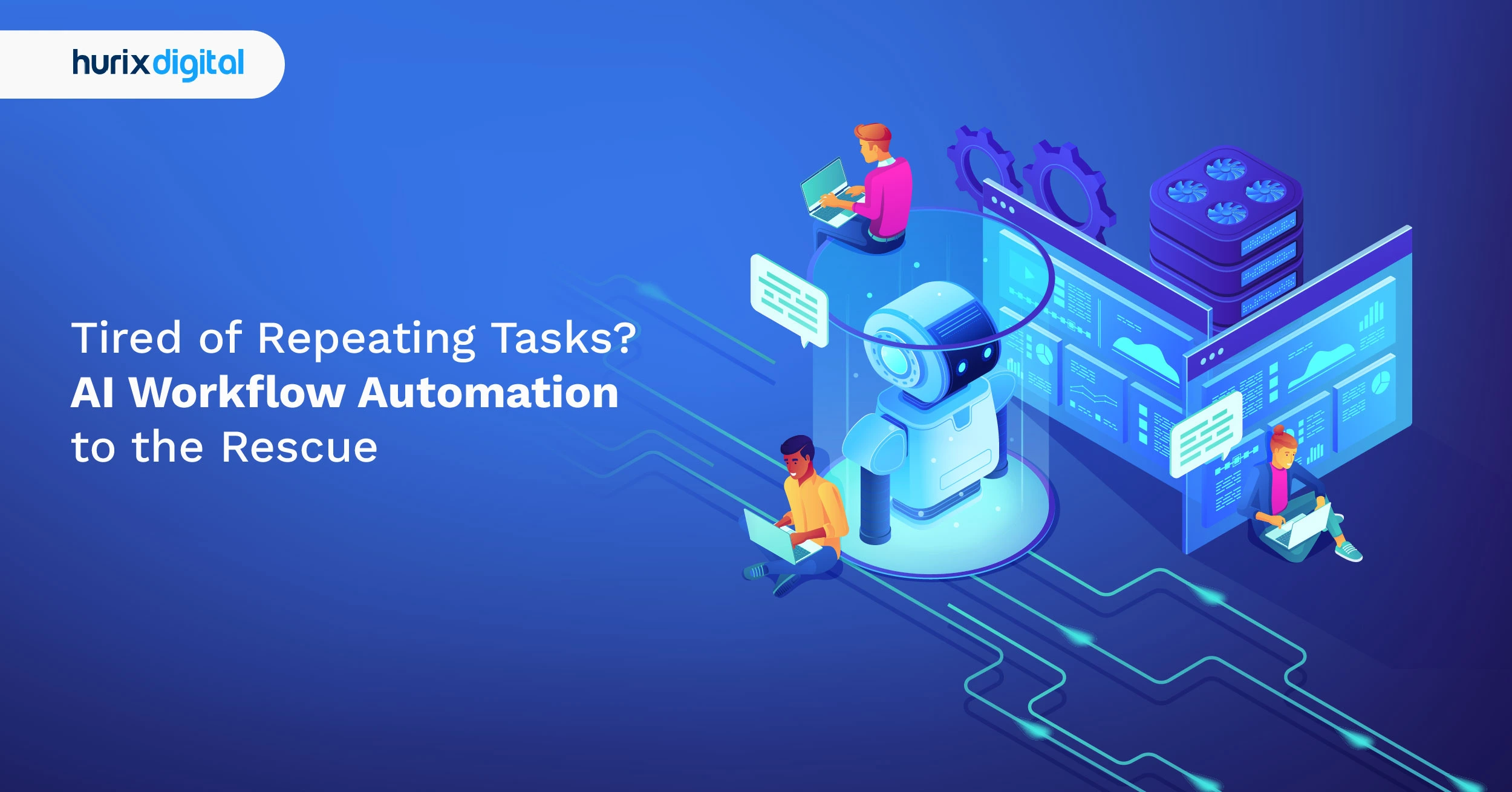
Overcoming AI Workflow Automation Hurdles with Smart Strategy
AI workflow automation has recently become a hot and incredibly exciting topic. However, the excitement is often overshadowed by a set of subtle, sometimes unvoiced, apprehensions about what really can be achieved, how it will impact the company, and how much it will cost, not only money but also in terms of the organizational effort.
Many people are frequently asking themselves these questions. “Is it real? Can we do it without everything getting out of hand?” These questions are not of a technical nature, but they are strategic ones that require a vision and a practical approach. It is not only about the most alluring feature. It is about integrating the talk with living realities. A question a leader might ask is: Where are the real opportunities, apart from the evident ones? What does “ROI” really signify if we include aspects like training, data cleaning, and mistakes? How can we be open about the workforce topic? And probably the most important thing is how we can be sure that we are building in an ethical and eco-friendly way?
They are strategic questions of such a level that quick responses won’t do. Instead, they require a careful, seasoned view to plot the course of AI workflow automation adoption. Let’s see how smart AI workflow automation will help you!
Table of Contents:
- How do You Identify the Best AI Workflow Automation Opportunities?
- What is the True ROI of AI Workflow Automation Initiatives?
- How Does AI Workflow Automation Integrate with Existing Systems?
- How Do You Ensure Data Quality for Effective AI Automation?
- What Impact Will AI Workflow Automation Have on Your Workforce?
- How do You Establish Ethical AI Workflow Automation Governance?
- What Strategies Ensure Scalable AI Workflow Automation Adoption?
- How Can You Avoid Risks in AI Workflow Automation Projects?
- Key Criteria for Selecting an AI Workflow Automation Vendor
- How do We Effectively Measure AI Workflow Automation Success?
- Conclusion
How do You Identify the Best AI Workflow Automation Opportunities?
Whenever a person really digs in to find the best spots to use artificial intelligence for workflow improvement, the case is seldom a gigantic, very abstract “digital transformation.” The biggest part is usually much simpler and closer to the ground. The best opportunities are sometimes the result of perceiving the unexpressed disappointments, the boredom of the people working, and the things that are done to depress the working mood of intelligent people. What people do not want to do is put off until Friday afternoon, the work that is done with the feeling of a necessary evil. Often, this is the very first signal.
Conversations between workers themselves, not just supervisory staff and employees, can be very effective. Ask them what part of their work could be removed unnoticed or what task feels most like data entry rather than thinking. Their responses are valuable, pointing to high-volume, low-variability tasks like automatic document classification, quick searches, and simple compliance checks. These processes, despite needing little human judgment, remain crucial in their areas.
A warning: not all monotonous tasks suit automation. There’s a tendency to automate anything that can be coded, but we must consider whether automation truly improves efficiency or if it diminishes human control. For example, in complex customer interactions, automating account detail retrieval is quick, but empathy and problem-solving still require humans. The best outcomes occur when AI handles routine, boring tasks, freeing humans for creative, strategic work. The goal is to enhance human effort with technology, not replace it. Sometimes, slow, manual processes are better suited; the key is identifying these cases.
What is the True ROI of AI Workflow Automation Initiatives?
One of the reasons people often misunderstand the full benefits of AI is that the real value of AI investment, especially in workflow automation, is quite challenging to figure out. It is not usually a straightforward way to show in a spreadsheet. Most organizations are overwhelmed with the thought of what they save most in cash when they start a project, cutting down on the time manual work, and speeding up the processes. And this is true, these companies can certainly reap those benefits; they are the easy wins that everyone tries to get first. Yet, an experienced perspective that has been through different industries and seen these projects develop would agree that it is just the tip of an iceberg of what really matters and what is gained as a result.
The biggest advantage, the existential change, occurs after the process of automation. What if AI were to do the less interesting parts of the work, such as reconciling invoices, data analytics, and report writing? Would the experts then not have to do the thinking and the innovative work? One financial analyst who was once loaded with mundane tasks would now be able to strategize and uncover market insights. Meanwhile, marketing, which is, if not completely, but mostly done through routine tasks, would be taken over by the specialist, giving her more time to become a creative one by coming up with the campaigns that are yet to be matched by algorithms.
Quite a few major organizations do not remember a crucial point: after automation, the liberated capacity should be given a specific purpose and roles redesigned on purpose. The real benefit of investing in return is not just shown in numbers but also in elevating job satisfaction, lowering the risk of burnout, and facilitating quicker and better decision-making. It enables a more concentrated workforce, thus enabling better customer service and organizational vitality.
How Does AI Workflow Automation Integrate with Existing Systems?
When folks speak about AI workflow automation integrating with existing systems, the imagery that is usually evoked is one of smooth, frictionless integration. In practice, it is typically a little more, well, tailored. It does not usually amount to merely switching a switch. Imagine the introduction of a newer, more highly specialised engine, fitted into an old, reliable car. You can tack it on. It has had custom mounts, a new fuel line, and a universe of cautious wiring to get all components lilting in unison.
Most commonly, the first thing that is remembered is APIs- direct digital handshakes between applications. Yes, and good, well-documented APIs are wonderful. They enable the AI element to transmit and receive data that is well-defined and predictable. What of the systems that antedate such proprieties? The guys who were humming along even twenty years ago, and continue doing their job faithfully, come to spend the night, but there is no easy “to the door”? It is the real art here.
Much of the time, we are creating bespoke data pipelines, middleware between the legacy system and the AI, or, in some cases, really smart robotic process automation. That would merely be training a computer bot to behave in the same way as a human being on the outdated interface, and passing the data it learns to the AI model. It is not beautiful, but it functions.
The difficult part is not just data transfer but comprehending data. An order status may have one meaning in a traditional ERP system and a slightly different meaning to an artificial intelligence algorithm that anticipates order cancellation. That is where the hard part comes in: bridging that semantic gap, making sure the AI actually understands what it is seeing.
It demands a deep dive into the business logic embedded within the old system. You can’t just connect the pipes. You have to understand the water itself. It’s a dance, really, between the past and the future. Respecting the robustness of what’s already there, while gently, carefully, introducing something entirely new to make it better. It’s rarely a “rip and replace”; it’s more often a thoughtful augmentation.
How Do You Ensure Data Quality for Effective AI Automation?
As we discuss the need to ensure data quality in order to achieve successful AI automation, the image we form is one of clean Excel sheets and well-labeled files. The reality, however, is much more detailed, much more mucky. Here, what really counts as quality is not mere precision, but rather relevance and representative assumption for the particular task. A dataset might be perfectly clean with all fields filled properly and yet be useless when they are asked to model something that reflects the real-world scenario in which the AI has to navigate.
It is not a moment of big clean-up but an ongoing exercise of vigilance. Information, particularly in systems having dynamics, degrades. The preferences of the customers adjust, the market situation varies, and new rules appear. What is suitable in January may create defective automation in July. A customer-feedback customer-satisfaction project, which entailed automated sentiment analysis, had an excellent starting set of training data that failed six months later when the product had changed enough so that old, clear complaints were instead turned into ambiguous complaints. The AI, based on outdated patterns, began to prioritize actual problems incorrectly. It was an intellectual reconsideration of what quality entailed in that paradigm-changing environment, rather than simply cleaning up on some ‘bad data’.
Ensuring the quality of the data implies asking whether the data can reliably perform the desired outcome with an adequate bias level regarding the present circumstances. It involves human input in understanding the business process and its downstream effects, and it creates feedback loops about performance and data quality. Processes must warn of data drift over the pace of automation break-up. What is easily lost in the frenzied deployment is the basis of effective AI automation.
What Impact Will AI Workflow Automation Have on Your Workforce?
Conversations on artificial intelligence to automate tasks gravitate conveniently to job displacement. It makes good, primal sense that so many in the workforce are fearful: Will my job disappear? The reality playing out inside organizations, both large and small, though, is more complicated and more human. It is less about one-dimensional replacement and more about dramatic rebalancing of what we actually do in our work.
Think of the monotony of a lot of work, filling in data, writing reports, or sorting through material. And machines are doing more and more of them effectively, as evidenced every day in the financial world to the legal world. Analysts can now generate spreadsheets using AI and therefore concentrate on interpretation and strategy. Paralegals depend on systems to make the initial document review and can then work on complex legal matters and client contacts that require judgment.
This transition is not always easy because it is associated with apprehensions and difficulties. The human side of transformation is one area that companies have difficulty coping with. They take steps in technology, but they might forget re-skilling and creating a culture that does not view AI as an enemy. It is a chaotic, inconvenient time of accommodating and adopting new interfaces, and it takes time and guidance as opposed to an updated piece of software.
The result is a workforce whose human skills are augmented. Judgment, critical thinking, creativity, emotional intelligence, and complex problem-solving are all more valuable. Machines abolish the mundane, leaving us with the space and time to think more strategically, more empathetically, and more truly human in our professional practice. This redefines our worth and leads us to the type of work that really requires our specific cognitive and emotional abilities.
How do You Establish Ethical AI Workflow Automation Governance?
One learns quickly that setting up an ethical AI workflow automation is not achieved by the creation of one single all-encompassing policy document. It is a concerted and continuous commitment, quite often cumbersome and requiring a lot of vigilance. The matter at hand is essentially about implementing a culture that would not consider “Can we automate this?” as the sole default question, but rather “Should we, and if yes, how do we make sure that the process is not the cause of harm, but the reverse?”.
The selection should include people from diverse backgrounds, not just programmers and project managers. Ideal teams also have philosophers, sociologists, and historians, who ask tough questions like biases in AI datasets and the impact of filtering out demographic groups. The first stage involves challenging assumptions and uncovering biases, which are hard to spot without others’ insights. A coworker once likened it to untangling yarn in the dark, requiring help from multiple people to find the knots.
The next step is to begin developing actual measures to regulate the conversation topics. It is more than just a matter of imposing certain rules; it defines the way accountability is manifested. The essential question is, “Who takes the responsibility when the automated system is the cause of a controversial decision?” Or, in the case of human-machine interaction, is there a role assigned for the human who can intervene if the system malfunctions?
A regular, independent audit is essential, going beyond routine checks to detect drifts, unexpected correlations, or subtle shifts that may cause ethical breaches. This involves understanding the social context, as algorithms can perpetuate inequalities. The process is like a vigilant gardener, constantly trimming and checking growth. It’s a continuous, private process aimed at ongoing improvement through questioning, acknowledging the many layers of oversight and recognizing that some areas remain undiscovered, fostering humility.
What Strategies Ensure Scalable AI Workflow Automation Adoption?
The technical components, algorithms, and data files are always the first things to come to mind when someone mentions scaling AI workflow automation. However, the reality is that the key to the wide use of the AI automation of the workflow, the real sauce of the secret, is mostly attributable to something broader than AI – pure human aspects. It’s all about human behavior, the feelings, and the trust people have towards what has been presented to them.
Imagine a scenario where the company is aiming to automate time-consuming but significant work during the first attempt. A prevalent mistake that may be made in such a situation is the building of a large, all-inclusive system to change the entire process in a matter of minutes or hours. And, by and large, that does not function well. Alternatively, the sensible method, that one that actually lasts, requires the exercise to be done with smaller steps. Concentrate on a single and specific problem. The manual procedure that is the root of the problem, causing the process to be very inefficient and people to continuously show signs of frustration with it, should be the one you choose.
For example, tedious data entry or repetitive report work can be eased by automation. Successfully automating such problems makes a quick impact, and others will see AI not as a threat but as a colleague that eases their workload and frees time for more creative tasks. This transforms AI from a perceived threat into a valuable helper.
And then, the part of this journey where one has to keep it real is the admission that these platforms are not perfect from the very start. There will be errors, situations where the AI is not able to perform correctly, and sometimes, a human must step in. Attempts to do the contrary will only result in trust loss, trying to make it look like the other party is untrue. Fully embracing shortcomings is good as well as creating unambiguous feedback channels and enabling users, people that the automation affects, to give the product some thought and even rate it. They, actually the ones who are the most familiar with the intricacies of the workflow. Their contribution is not only a nice thing to have; it is an absolute necessity for a strong, real, scalable automation.
The absence of that iterative learning, that readiness to modify according to on-the-job conditions, is the most probable fail point of even the brightest algorithm. It is more of a collaborative and continuous rather than a grand reveal kind of event. People need to feel that they have a say in the matter when a new system is being designed and also during its implementation and operation. The feeling of sharing responsibility, of being part of the process of developing their own future work, is probably the most powerful factor that creates the right environment for the spread and the strong commitment of the people to the change. Slowly but surely, it shifts the culture from the one of passive reception to that of active engagement.
How Can You Avoid Risks in AI Workflow Automation Projects?
It is easy to be drawn into the technical aspects of risk mitigation on AI workflow automation, such as data integrity and model robustness. However, the larger problem is the expectations of human beings and the inertia of organizations.
The system yielded the figures, but it did not provide the context and bring the answer to why there were such anomalies, and only a human being could possibly interpret that. Although technically perfect, these reports remained practically useless until the humans also became overseers, and not just mere recipients.
Ask about the tricky parts and hidden steps they know but don’t document. Learn the shadow processes, the behind-the-scenes actions and instincts that make official steps work. AI thrives on predictability, but human work often involves improvisation amid unpredictability. Automated bad processes just speed up or make the errors more consistent, like rolling on a dirt road with unfilled potholes.
We’re creating a co-pilot, not an autonomous vessel. Someone must monitor drifts, unexpected results, and data variations. It’s a continuous dialogue, but not with the machine. Risks include glitches, loss of trust, and opaque black boxes. Mitigation involves transparency, human presence, and acknowledging perfection as a Utopia. Progress relies on replication under human supervision.

Key Criteria for Selecting an AI Workflow Automation Vendor
Picking an AI workflow automation firm is more than just a buy; it’s about making a key link that can change how your business works. The choice should follow rules that consider more than just a strong first show and check out its real, long-term use.
1. Practical Compatibility and Seamless Integration
The first rule is a real match. The main thing to ask is if the tool really fixes your own, often mixed-up, work problems. It’s not enough for a fix to look good in a show; it must join well with what you have now without needing a big change. True fit means the tool works well with your old systems, not making you face a tough, costly join task. A study by IBM said that joint issues are one of the top three causes for AI projects to fail. This shows how key it is to pick a firm that can make a smooth, real change.
2. Transparency and Explainable AI
The “black box” issue is big and needs solving. You must know why the AI chose a certain act, mainly for jobs tied to money, supply chain, or people. A firm must give a clear, easy-to-follow reason for their automation, letting you get and share the AI’s moves with others who check your work. Trust does not grow from secrets. Being able to say the “why” behind the AI’s choices is key to being open and trusted.
3. The Vendor as a True Partner
Tech is never perfect and will always need tweaks and help. You need a firm that will stand by you in these trying times. This means a help group that gets the small parts of your work, not just the bits of their product. The firm’s wish to see you do well, past just selling, is what will help you deal with not-so-great parts and get lasting worth from your money.
How do We Effectively Measure AI Workflow Automation Success?
Checking how well AI works in a job is more than just looking at “time saved” or “tasks done.” Those are simple counts. True wins are often in small shifts, quiet changes that a sheet can’t show well.
A smart person knows it starts with people. Did the AI really let people work on bigger, new things, or just move boring tasks from one place to another? Look at the team. Are they stuck in the same old work? Are they solving bigger issues? Or are they busy fixing AI mistakes, stuck in a loop? That last bit happens a lot. It looks like a step up, but it’s just busy work.
Think about how right the AI is!
Ask: What mistakes does it stop? Big bad ones, or small ones anyone can catch? And what new mistakes does it start? Every setup, people or tool, misses some things. A really good setup lets people check, fix, and teach the AI when it errs, using those times to learn, not just fail. It’s about being partners, not just changing one part.
In the end, we seek a change in how well things turn out, not just how many. Did people like our service more because the AI was quicker and more on point? Are choices made with better, deeper info? We look at the big picture. Often, the best sign of doing well isn’t one fact, but the gentle sound of a job done smoothly, smartly, and making everyone feel more useful. To me, that is the real sign.
Read EXCLUSIVE Press Release: Hurix Digital’s AI-Driven Content Ingestion Transforms Enterprise Workflows with 100% Accuracy and Fast Delivery
Conclusion
Today, developing effective AI workflow automation is not only about adapting the newest technology but also about asking elementary strategic questions and making smart choices that follow your organization’s vision and values. The key takeaways of these ten vital questions to consider when automating your AI-driven business include that to achieve successful AI automation, it is important to consider opportunities, ROI, integration solutions, data quality, workforce impact, ethical governance, scalability, risk mitigation, vendor services, and success measurement.
Companies that succeed in a world characterized by AI are those whose executives combine strategic thinking with a practical, automation-minded approach to automation. Their secret is that they do not intend to substitute human intelligence but rather enhance it and create workflows so that AI will perform routine tasks with humans trained to innovate, strategize, and solve complex problems.
Anyone in a leading position who intelligently addresses these critical questions will streamline operations and build a strong, ethical, and futuristic organization.
Over the years, Hurix Digital has partnered with many organizations on their AI workflow automation journey and helped them make informed choices. We have the experience to guide you through the stages of utilizing AI, from opportunity evaluation to outright implementation, ensuring that the given AI programs are impactful, fair, and do not demotivate employees.
Get in touch to know more!

Vice President – Content Transformation at HurixDigital, based in Chennai. With nearly 20 years in digital content, he leads large-scale transformation and accessibility initiatives. A frequent presenter (e.g., London Book Fair 2025), Gokulnath drives AI-powered publishing solutions and inclusive content strategies for global clients
 Upcoming Masterclass | Build an Army of Brand Evangelists using Training & Development | November 20th, 8:30 AM PDT | 11:30 AM EDT | 10:00 PM IST
Upcoming Masterclass | Build an Army of Brand Evangelists using Training & Development | November 20th, 8:30 AM PDT | 11:30 AM EDT | 10:00 PM IST



